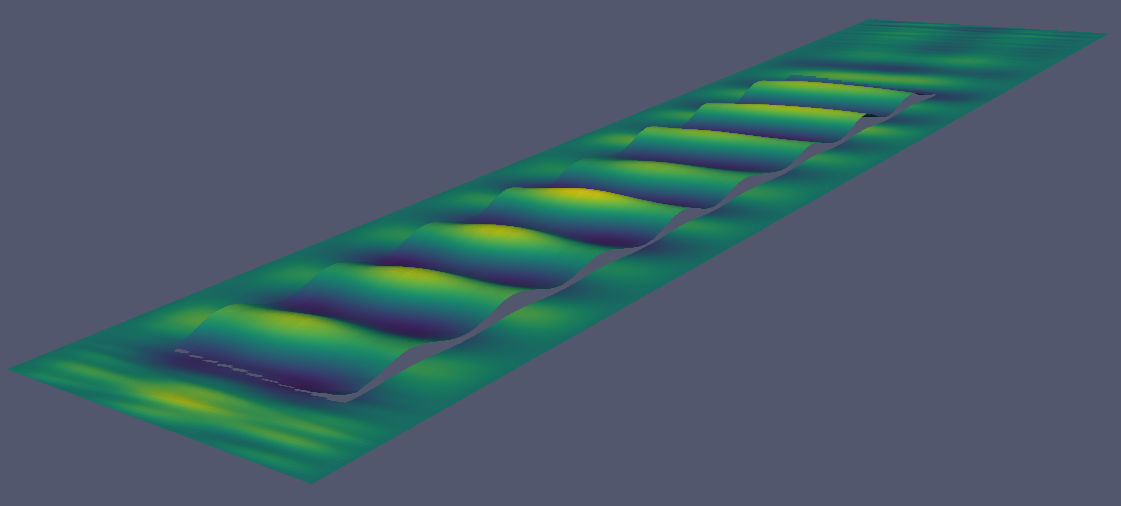Gridap Offshore
A library of Finite Element tutorials for/by Offshore and Hydraulic Engineers
This is a library of tutorials made for and by Hydraulic and Offshore Engineering students at Delft University of Technology. The goal of this library is two fold:
Guide students on the use of Gridap.jl to solve PDEs, providing tutorials for a wide variety of background levels.
Give visibility to the work of MSc students that used Gridap.jl in their MSc thesis/project.
The collection of tutorials posted in this site are based on Gridap.jl a pure Julia Finite Element library. Here you will find tutorials covering contents in computational modeling taught in the Civil Engineering MSc at TU Delft, and tutorials related to MSc thesis from different masters, including:
List of tutorials:
Theory tutorials
Solving the Euler-Bernoulli equation with Continuous/Discontinuos FEs
Solving the Timoshenko beam equation: approaches to avoid shear locking
MSc Thesis tutorials
Waves through porous medium by Joël Ruesen, January 2022
This tutorial shows how wave-progression through a porous medium is modelled. The model uses viscous incompressible Navier Stokes in combination with Darcy-Forchheimer resistance terms in the momentum balance, implemented using the Gridap library.
Reference: Ruesen, Joël. Wave damping by large-scale offshore kelp farms - a numerical modelling framework using a porous medium approach. (2022). MSc thesis
Very Large Floating Structures (VLFS) by Dorette Regout, October 2021
This tutorial shows how to solve a Fluid Structure Interaction (FSI) problem using Gridap and provides the instructions to build a 2D model considering a multi-module VLFS, solved in the frequency domain.

Reference: Regout, Dorette. Hydroelastic Analysis of a Multi-Module Very Large Floating Structure. (2021). MSc thesis
Very Flexible Floating Structures (VFFS) by Sjoerd van Hoof, July 2021
This tutorial shows how a Fluid Structure Interaction (FSI) in a 2D domain is modelled. Potential flow is used to model the fluid and on top a Dynamic Euler-Bernoulli beam is located that serves as the floating structure.

Reference: van Hoof, Sjoerd. Hydroelastic wave deformation of Very Flexible Floating Structures: A performance study of a monolithic finite element model. (2021). MSc thesis
Additional material
The tutorials in this library are not covering all the features of Gridap. If you are interested in additional Gridap-related material, please take a look at the following sources:
Sources to learn Julia:
Download the binary and documentation
Introduction workshop to julia: Introduction to Julia | Jose Storopoli | JuliaCon 2022
Sources about Gridap.jl:
Gridap.jl: a FE package to solve PDEs in Julia
Gridap wiki. In this wiki-page you will find interesting descriptions on:
Getting started with Gridap
Using VS-Code as Julia IDE
REPL workflows
"How-to" tutorials on creating a julia package, generating documentation, precompiling a package and registering a package in the Julia server.
Presentations at JuliaCon:
Solving partial differential equations in Julia with Gridap.jl | Francesc Verdugo | JuliaCon 2020
New tools to solve PDEs in Julia with Gridap.jl | Francesc Verdugo et al | JuliaCon2021
Solving transient PDEs in Julia with Gridap.jl | Oriol Colomes | JuliaCon 2022